Category: Articles
-
PTE Exam Registration Process & How Much It Cost
PTE Exam PTE Exam stands for Pearson Test of English. It is an English proficiency exam designed to assess the language skills of non-native speakers who wish to study, work, or immigrate to English-speaking countries. The PTE exam assesses the four main language skills: Reading, Writing, Speaking, and Listening. The test is computer-based and uses…
-
IELTS Test Area of Content, Types, Registration Process & its Cost
IELTS IELTS (International English Language Testing System) is a standardized English language proficiency test that measures the ability of non-native English speakers to communicate in English for work or study purposes. It is accepted by universities, colleges, employers, and immigration authorities in many countries around the world. The IELTS test measures proficiency in four areas:…
-
Vitamin Types, Sources & Daily Vitamin Intake
Vitamin Types & Sources Vitamins are essential micronutrients that the human body needs in small amounts to maintain normal metabolic functions, growth, and development. There are two types of vitamins: fat-soluble vitamins and water-soluble vitamins. Fat-soluble Vitamins Functions & Sources Fat-soluble vitamins are stored in the body’s fatty tissues and liver and can accumulate to…
-

Hollyday-Segar Method of Calculating Maintenance Fluid, Fluid Therapy
Fluid Therapy Fluid therapy is divided into MAINTENANCE, DEFICIT, and REPLACEMENT requirements. When choosing the type of fluid and volume to be administered, careful consideration should be paid to each component of fluid therapy. The Holliday-Segar equation remains the standard method for calculating maintenance fluid requirements. Accounting for deficits when determining the fluid infusion rate…
-
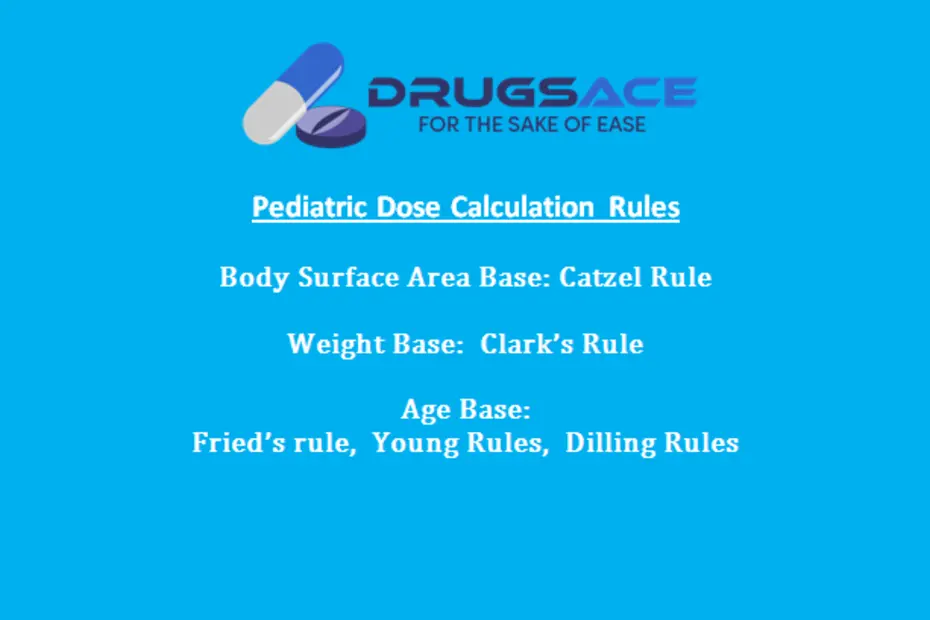
Pediatric Dosage Calculation Rules
Introduction After the completion of this module you will be able to: Calculate the proper dose for a child when given the adult dose of a drug using the following methods: Catzel Rule (Nomogram Method) (Using a Child’s Body Surface Area) Fried’s Rule (Using the Child’s Age in Months (FOR UNDER 1YR OF AGE)) Young’s…
-
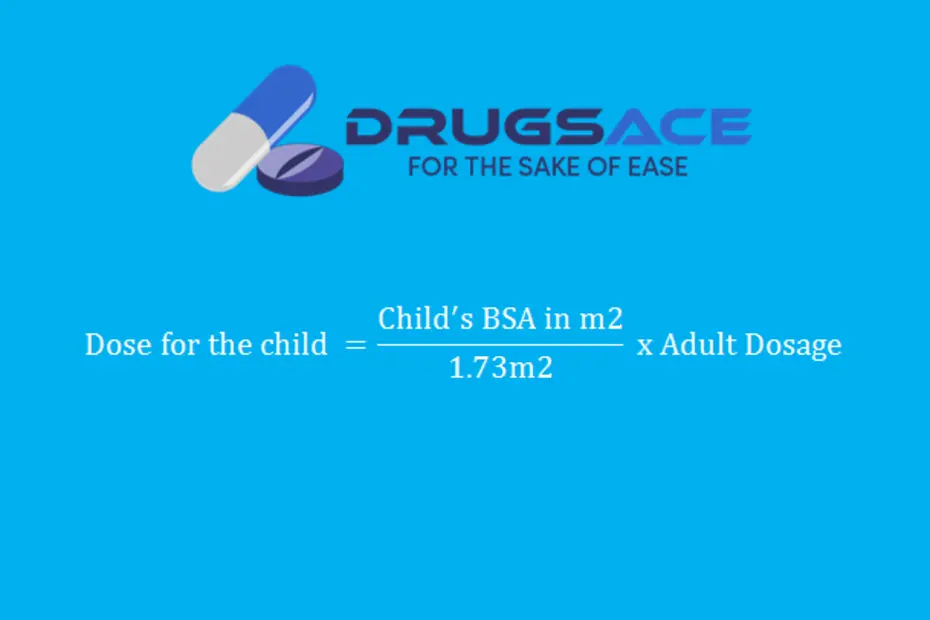
Drugs Calculator: How to use Catzel Rule (Based on body surface area)
Drugs Pediatric Dose Calculator Based on body surface area Catzel Rule The Nomogram method or Catzel Rule is utilized to determine the correct pediatric medication dosage based specifically on the patient’s size. The patient’s size is identified as body surface area (BSA) in meters squared (M2). The average adult client (weighing 150 – 154 lbs) will…
-
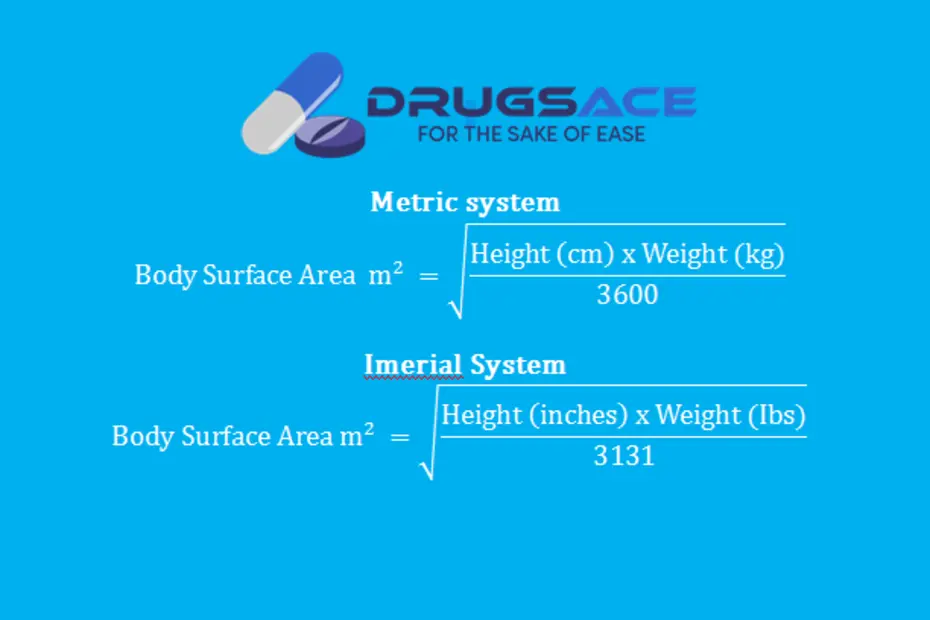
How to Calculate Body Surface Area (Mosteller Method)
How to Use Body Surface Area Calculator (Mosteller Method) This review will discuss how to solve nursing dosage and calculations on body surface area! Body surface area is used to help calculate the most accurate medication dosage for a patient. For example, some medications ordered for a pediatric patient may be based on body surface area (BSA) and…
-
KAPS (Knowledge Assessment of Pharmaceutical Sciences) exam guide and sample paper Quiz
The KAPS (Knowledge Assessment of Pharmaceutical Sciences) exam tests your knowledge and understanding of pharmaceutical sciences. Passing it confirms that you know enough to practise safely and effectively in an Australian setting. This guide to the KAPS exam outlines the subject areas we assess, and will help you to prepare for the exam. You’ll need…
-

How to Calculate Body mass index (BMI) Calculator
Body mass index (BMI) Body mass index (BMI) is a measure of body fat based on height and weight that applies to adult men and women. Use the tool below to Calculate yours. Enter your weight and height using standard or metric measures. Select “Calculate” and your BMI will appear below. BMI Categories: Underweight = <18.5 Normal…
-

Drugs Calculator: How to use Clark’s Rule (BASED ON BODY WEIGHT)
Clark’s Rule (Based on Body Weight) Clark’s rule is an equation used to calculate pediatric medication dosage based on the known weight of a patient and a known adult dose of medication to be used. Clark’s rule equation is defined as the weight of the patient in pounds divided by the average standard weight of…
-
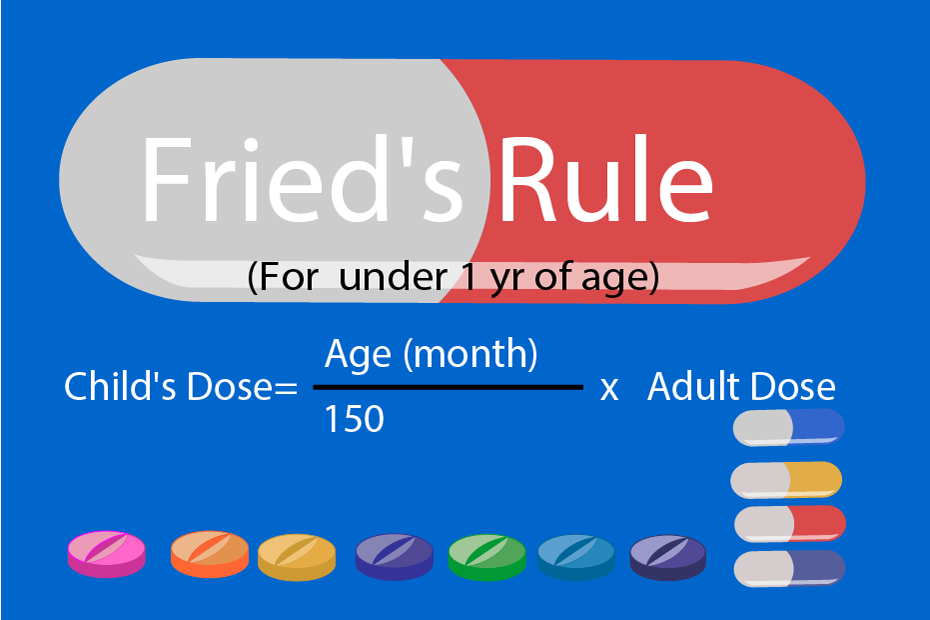
Drugs Calculator: How to use Fried’s Rule (FOR UNDER 1YR OF AGE)
Fried’s Rule (For under 1yr of age) Fried’s Rule is another method used to calculate the correct dose of medication for the pediatric patient when given only the adult dose. Fried’s Rule is available to use to calculate an infant dosage for patients under 24 months when a proper dosage has not been already determined.…
-
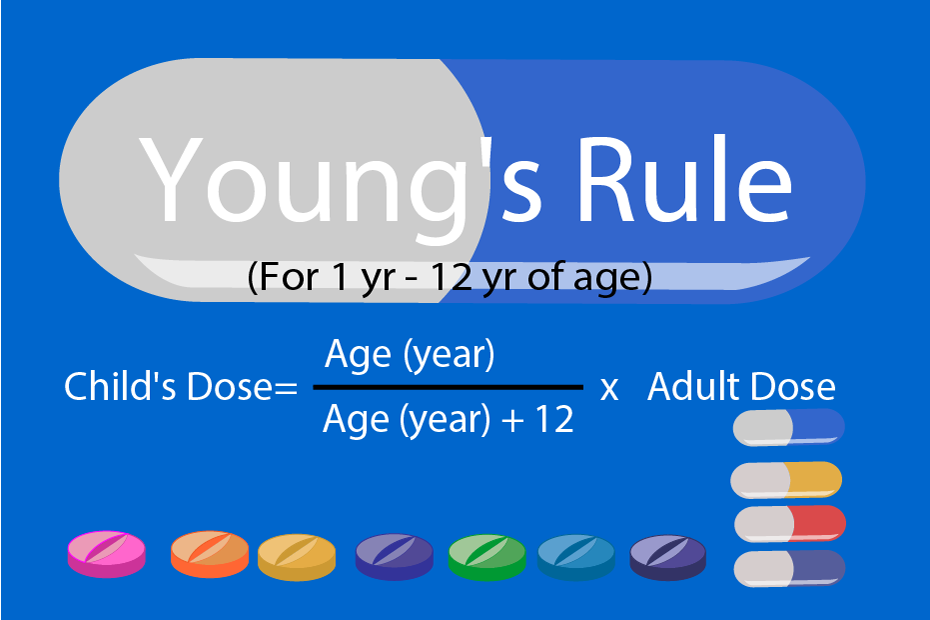
Drugs Calculator: How to use Young’s Rule (FOR 1YR – 12 YR OF AGE)
Young’s Rule (For 1yr – 12yr of age) Young’s Rule is an equation used to calculate pediatric medication dosage based on the patient’s age and the known recommended adult dose. The definition of Young’s Rule is the age of the patient, divided by the age added to twelve, all multiplied by the recommended adult dose.…
-

Drugs Calculator: How to Use Universal Formula
Universal Formula (Toney-Butler, 2021) In the universal formula (or “desired over have method”), the desired amount (D) is the dose prescribed and the amount on hand (H) or the amount you “have” is the available dose or concentration. The quantity (Q) is the form and amount in which the drug is supplied (i.e. tablet, capsule, liquid). To calculate the dose, take…
-
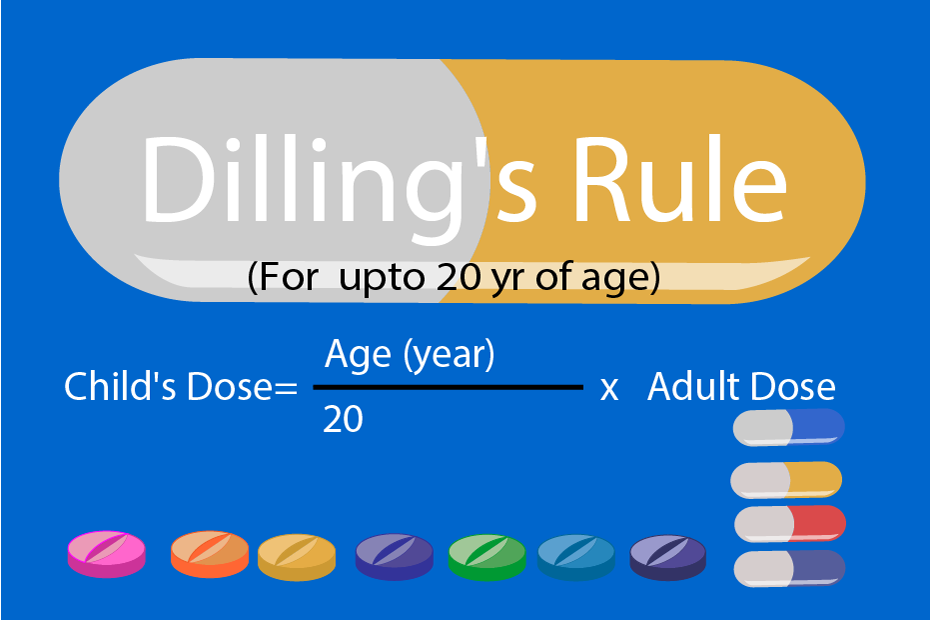
Drugs Calculator: How to use Dilling’s rule (FOR UPTO 20YR OF AGE)
Dilling’s rule (For upto 20 years of age) Dilling’s rule is an age-based formula for calculating pediatric dose of drug. This formula based Calculator appears below: Dilling rules = Age in years / 20 × adult dose Example: A seven year old pediatric patient is admitted to hospital. The dispenser is tasked with determining what…